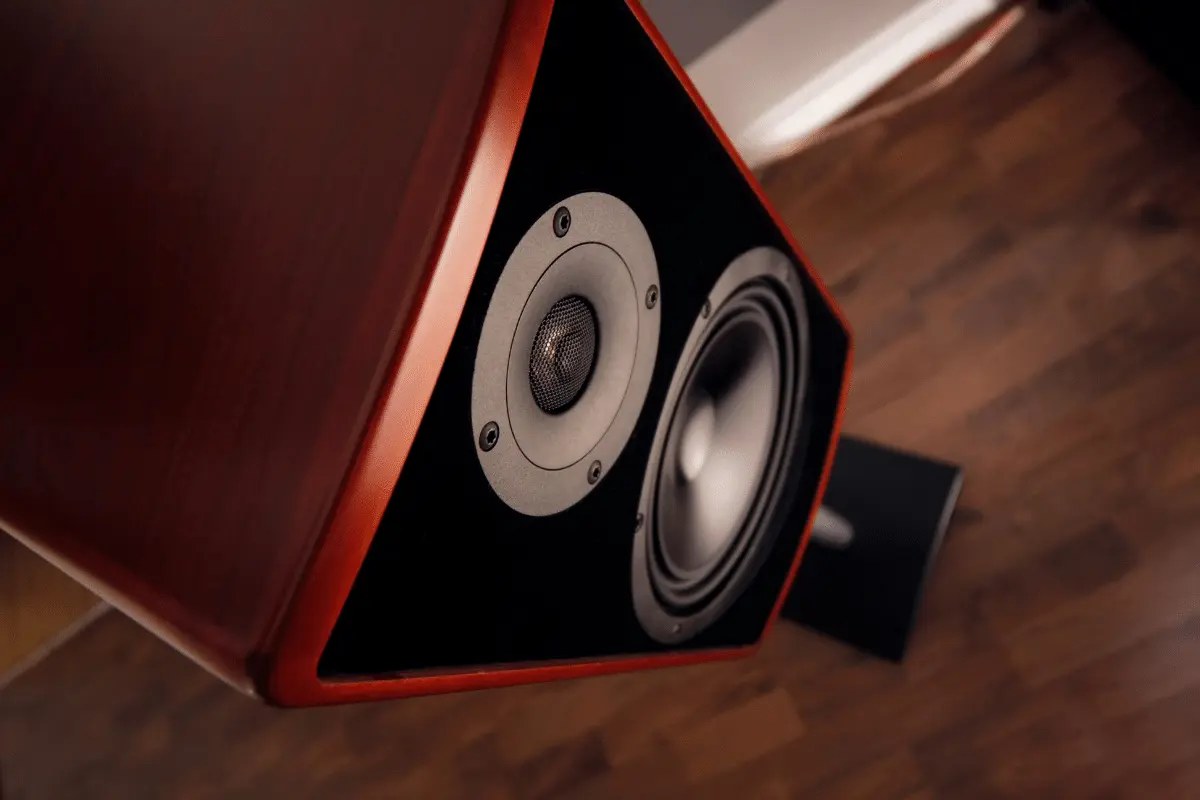If you are looking for ways and methods around how to stop getting feedback in headphones, you are not alone. Several solutions are out there, including upgrading to Automatic Feedback Suppression technology.
Here are some tips to fix static noise in headphones. If you are having trouble with microphone and speaker interference, you should turn off your mic and check the wirings.
Listed below are a few of the most common solutions. Follow them and you should be on your way to enjoying music or videos without feedback.

Fixing static noise in headphones
If you’ve noticed static noise while listening to music, media recordings, or other sounds, there are a few things you can try to fix the issue. This noise can be a result of a defective auxiliary port, also known as the headphone jack.
First, you should plug the headphones into several AUX ports, one on each side of the device. Secondly, you should check the headphones’ wires. If any of them are loose, this problem could be caused by corrosion or a poor electrical connection.
In many cases, this problem can be solved by upgrading to higher-quality audio files, adjusting the volume, or even replacing the audio jack. However, if these methods do not work, a new pair of headphones may be the only solution to this problem.
Moreover, some models have a built-in noise cancellation feature that can reduce this problem. If the noise is still persistent, you should try to repair the headphone driver or replace it with a new one.
If the problem continues, it’s likely caused by the headphone jack. One way to repair this problem is to reinforce the headphone jack with insulating tape or a replacement. If you have a removable headphone jack, you can replace the headphone jack as well.
If these options don’t work, you can also try swapping the headphones with speakers to determine if the problem is related to the jack. If the static noise continues, it’s also possible that the headphones themselves are dirty. Cleaning them can remove any debris that’s in the headphones’ wires.
Cleaning the audio jack can also help resolve this issue. Dirt and dust can get trapped inside the jack and cause static noise. Cleaning it is an easy and inexpensive solution. 99% alcohol solution will do the job without causing any moisture damage.
Be sure to turn off the computer and remove the cords before you proceed. If all else fails, consider buying a new pair of headphones. Once you’ve tried the solutions above, you should be able to enjoy music again in no time.
Upgrading to Automatic Feedback Suppression technology
Automated feedback-suppression algorithms, also known as AFS, use a mathematical algorithm to detect and reduce the gain of offending frequencies in audio signals.
These filters use ultra-precise 1/80-octave notch filters to remove the offending frequencies while preserving the surrounding frequency spectrum and overall sound quality.
Because AFS works so quickly, it’s almost impossible for a human ear to detect an abnormality.
The processing power of feedback-suppression technology is crucial in this endeavor. ANC algorithms must contend with the audio signals captured by the contribution units and their frequency profiles when the headphones are worn.
However, if the noise-canceling technology has adequate hardware, it can significantly reduce feedback. Therefore, many headphones equipped with this technology have a clear edge over competing models.
If you’re considering upgrading to Automatic Feedback Suppression technology for headphones, you may want to consider the following features.
In addition to improved sound quality, automatic feedback suppression technology also reduces the noise in your headphones. Bowers & Wilkins headphones are built with the ADAU1787 chip from Analog Devices.
The company incorporated feedback from Bowers & Wilkins to improve the chip’s design and function. The company is working to provide headphones with multiple levels of ANC and improved sound. This is the best way to experience the benefits of this technology.
The dbx AFS2 features a redesigned DSP module that provides faster, more focused filters in live mode. The dedicated processor offers up to 24 programmable filters per channel, and filter Qs of 1/80 of an octave.
These features allow pinpointing feedback and reducing it to a minimum. It’s also easy to customize automatic feedback suppression with a dbx AFS2 Advanced Feedback Suppression processor.
Checking wirings
The first step is to determine what the problem is. The problem may be with a wire. Check for short circuits and breakages in the wires that lead to the headphone jack. If you can locate the short circuit, use masking tape to isolate it.
The short circuit is caused by the wires’ internal wirings, which can be repaired with new ones. Then, check the wirings for any crimps or other damage, such as frayed or broken wires.
The internal wiring of your headphones can also cause this problem. The wires are most vulnerable at the connection point to the 3.5mm audio jack. Try teasing this area to see if any of the wires are loose or disconnected.
If the problem persists, you may need to replace the headphones. If you are unsure of what to do, follow these steps to ensure the internal wirings are intact.
If you can’t identify the culprit, check the wirings on the headphones. A loose wire could cause the feedback, or you might need to reconnect the headphone jack to your PC. It’s also worth looking into the speaker of your headphones.
If these don’t work, then the speaker could be damaged. If the noise persists, replace it immediately. In most cases, this problem can be resolved by updating audio drivers.
Turning off the microphone
One of the easiest ways to fix the problem of feedback in headphones is to turn off the microphone. This can be done on PC or Mac by right-clicking on the speaker icon in the system tray and selecting “Recording Devices.”
Click on the microphone’s name to mute it. Alternatively, launch System Preferences, go to the Sound menu, then select “Input Volume”. Once the microphone is muted, try turning off the volume.
Some people may experience intermittent feedback. If the feedback is continuous, they can turn down the microphone’s volume. Nevertheless, this may not eliminate the feedback. You will still hear an unpleasant tone or ringing.
In this case, you should turn off the microphone. Turning off the microphone is not a permanent solution, but it will at least help you stop the annoying feedback. But, there are some situations where you may not be able to turn off the microphone.
If you’re using a wired microphone, you may be susceptible to static noise if it’s not properly connected so your first step should be to check whether the cables are loose.
If they’re too loose, the microphone won’t connect to the audio interface or the amplifier, so you might need to buy a new one and if all else fails, you should replace the microphone. If you’re unable to resolve the issue, you can try the tips in the article.
A microphone can also cause a feedback loop when it’s not connected to the output. To cut the loop and eliminate the feedback, you can unplug and replug your headphones. Some mics are sensitive enough to amplify minor noise, but the microphone can pick up more sounds than the other party.
So, turning off the microphone is an effective way to remove echoes. While this method may work for some people, it may not work on all computers.
Reinstalling the headphones on a PC
If your problem persists after reinstalling your headphones, the drivers that cause feedback may need to be updated. Fortunately, you can perform a manual update of your sound card’s driver. To update your driver manually, open the control panel and choose Hardware and Sound.
In the Playback tab, click the Advanced option. To turn off this feature, right-click the empty taskbar and select Uninstall. If this does not solve the problem, try uninstalling Windows Update and then install the latest drivers.
Another common cause of the feedback is an outdated Windows audio driver. The driver must be updated or the sound may not work properly. Open Device Manager and click on “Hardware and Sound.” Go to the Hardware and Sound tab and select Realtek.
Make sure to check the Multi-stream mode. When the audio driver has been updated, the problem will be solved. If this is still not the case, try rebooting your computer and reconnecting the headphones.
If your computer is running Windows 10, you can open Windows Settings by clicking on Start > Settings> Update & Security> System. Right-click on the blank area, then select Show Disabled Devices.
Your headphone should show up. Select Enable, and the problem should be resolved. If you still experience feedback, try fixing fix three, which can work in Windows 7.
In the case that the problem persists, reinstalling the headphones is not the most ideal solution. If your headphones are not working on your PC, try using an alternative set of headphones to test them.
Depending on the type of headphones, you may have a software error. In such cases, you can disable the software by uninstalling it in the Sound settings of Windows 10.





Leave a Reply
You must be logged in to post a comment.